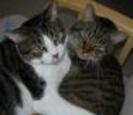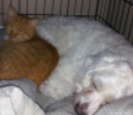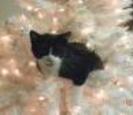Feline Care Guides
Feline Leukemia and Rabies
-
Feline leukemia virus (FeLV) is contagious among cats. Unlike many other viruses that enter specific cells in the body and destroy them, FeLV enters certain cells in a cat’s body and changes the cells’ genetic characteristics. This permits FeLV to continue reproducing within the cat each time infected cells divide. This allows FeLV to become dormant (inactive) in some cats, making disease transmission and prognosis (outlook) difficult to predict.
Rabies virus is dangerous and infects animals and humans worldwide. Rabies is generally fatal in all species, and any warm-blooded animal can become infected. Foxes, skunks, coyotes, and certain rodents spread the disease in many cases. Surprisingly, cats are more commonly involved in spreading rabies than dogs are. In fact, cats are the number-one domestic animal carrier of rabies in the United States.
Read More Feline Nutrition
-
Proper nutrition can help ensure that your cat has optimal health, resistance to disease, a healthy haircoat, and energy. These factors can result in fewer behavioral problems, a good quality of life, and a long life span.
Read More Feline Obesity
-
Obesity (the storage of excess fat) is usually caused by excessive food intake and insufficient exercise. One of the biggest problems in cats is overfeeding, which can lead to serious problems, including obesity, heart disease, and arthritis, resulting in a shortened life span. Your veterinarian can recommend a proper type and amount of food to maintain your cat’s ideal weight.
Read More Feline Senior Wellness
-
With many cats living well into their teens or even twenties, many owners wonder: When is a cat truly a senior citizen? The answer is that there is no specific age at which a cat becomes “senior.” Individual pets age at different rates.
Read More Feline Urinary Problems
-
Here’s how your cat’s urinary system works. The kidneys filter waste and toxins from the blood. These waste products then become part of the urine in the kidneys. Urine leaves the kidneys through narrow tubes called ureters, which empty into the bladder. When your cat urinates, the bladder is emptied through a tube called the urethra. Feline urinary problems are usually grouped into conditions of the lower urinary tract (the bladder and urethra) and the upper urinary tract (the kidneys and ureters).
Read More


































